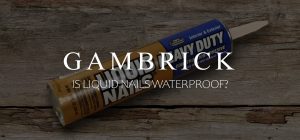Can Vinyl Fencing Be Recycled?
In general, vinyl fencing can be recycled and is accepted at most, but not all, recycling centers. Call ahead before you take your fencing in to find out. This is due to the fact that vinyl is a kind of PVC (polyvinyl chloride), and some forms of PVC can be difficult to recycle and pollutes the environment. In most cases it’s better to try and re-use the fencing. Vinyl is a long lasting material that’s hard to damage. Panels and posts can often be taken apart and re-installed somewhere else. Whenever I have a vinyl fencing job, I always try to sell or give the fence away before recycling it. You can also try returning it to the manufacturer. Most have programs where they accept it back.
Vinyl fencing is a very durable material, looks good, is easy to clean and great for outdoor use, which is why so many people are using it for fencing these days. In the old days we used primarily wood or chain link but these days most people are choosing vinyl.
Even though vinyl fencing is recyclable, taking it to a vinyl fence manufacturer may be a better option. Typically they can re-use it in the manufacturing process. If you have a manufacturer near by it’s another option worth considering.
The one thing you don’t want to do with vinyl fencing is throw it away. Many places will not accept it.
Ahead we’ll discuss more about vinyl fencing, the material, recycling and other options.
What Is Vinyl Fencing?
PVC, often known as polyvinyl chloride or plastic #3, is the third most widely used plastic on the planet. Every year, over 40 tons of PVC are manufactured and used to make all sorts of products which includes fencing. Just about every home built these days contains some sort of PVC product.
Vinyl is commonly used as a shorthand name for polyvinyl chloride (PVC) plastic. It’s used in a range of products from flooring to siding to fencing. In chemistry, the term “vinyl’ has a broader meaning which includes a range of different thermoplastic chemical compounds derived from ethylene. In other words, vinyl and PVC are not always the same thing.
PVC was first developed in the 1800s and PVC pipes were first utilized in Germany in the 1930s. Vinyl fencing, sometimes known as PVC fencing, has been in use since the 1970s.
The first vinyl fences were built in the ranch rails style which mimicked the look of traditional wood fencing. It was primarily used on farms to replace wood. However, today it’s widely available and comes in a variety of styles, sizes and colors.
Vinyl is a versatile and durable material that’s used throughout the construction industry which includes fencing. It’s water-resistant, and easy-to-clean which makes it great for outdoor use. It’s also easy to install because it comes in factory made panels. This is a benefit in terms of recycling because it’s easy to take apart and re-use somewhere else if you change the fence.
In the past, misconceptions about vinyl fencing, the material or design choices may have caused some to overlook it. But it’s very popular at the moment. The design options are nearly unlimited, it’s affordable and looks great. And it’s recyclable which is a big concern for some homeowners.
Vinyl Fencing Can Be Recycled
Vinyl fencing is a fairly simple product to recycle and can be turned into a variety of useful items. In many cases, it will be recycled and used to make even more vinyl fencing.
If you care about the environment, a natural wood fence or one built out of recyclable metal or vinyl may be your best option. Vinyl is 100 percent recyclable, so it can be considered an environmentally friendly product. Especially if the fence is already made from recycled plastics.
Vinyl can be recycled in one of two ways once it has been taken to a recycling facility.
- Mechanically Recycled. Meaning it may be broken down into small pieces, melted, and then utilized to make new vinyl product.
- Feed Stock Recycling. It can also be broken down into its basic chemical components, chlorine and carbon, which can then be re-used in a variety of ways.
PVC Fencing Can Be Recycled
PVC can be recycled using two primary methods.
- Mechanical Recycling. PVC is ground into fine particles and then thoroughly cleaned. The washed particles are then dried after passing through a flotation separator. These microscopic particles are melted down and remolded into a new product after they have dried.
- Feed Stock Recycling. Also known as chemical recycling or tertiary recycling, converts waste polymer into original monomers or other valuable chemicals. These products are then used as feed stock for a variety of other industrial processes or as transportation fuels.
The most frequent method of recycling is mechanical recycling. When the procedure is used on plastics, micro-plastics are created, which can end up in our water and food. This is especially problematic when it comes to PVC, which includes highly harmful compounds.
PVC trash is converted into smaller chemical components using a variety of methods such as pyrolysis, hydrolysis, and heating. These components are utilized to make a new product out of PVC.
Even though these methods exist to break down and recycle PVC, I prefer trying to re-use the material. In my opinion, re-use is a better way to recycle than breaking down plastics. There are plenty of people in need of a good second or even third hand vinyl fence as long as it’s in good condition.
Where Can Vinyl Fencing Be Recycled?
Vinyl fencing is accepted at most, but not all, recycling locations. You should always call ahead to double-check before hauling the fencing in.
Nearly all vinyl fencing manufacturers have implemented a program where you can return your old fencing to them. They then recycle the material to make new vinyl fencing.
This is frequently a far better option than going to a recycling center, because vinyl fencing manufacturers will be able to reuse the entire fence, whereas recycling centers may only be able to reuse a portion of it. It also limits the transport of potentially harmful chemicals sine the recycling is being done by the actual fence manufacturer. In some cases they can even do it in the same facility.
Is All PVC Fencing Recyclable?
Whether or not your PVC fence can be recycled has to do with exactly what type of PVC it’s made of and how much. This is due to the fact that some vinyl fencing contains a small quantity of PVC and some has a lot. The higher the ratio of PVC the harder it is to recycle it.
When in doubt, call the manufacturer. They’ll be able to tell you exactly what’s in the fence and if you can recycle it. These days, most manufacturers are conscious of recycling so they make it easier to do. But that’s not the case with older PVC fences.
If you have any type of PVC fencing, take it to the recycling facility or the manufacturer to find out if it’s safe to recycle. They’re the experts. Some facilities may be unable to separate the vinyl from the PVC due to a lack of equipment while others can.
I prefer to send the fencing to the manufacturer whenever possible. Assuming I can find out who the manufacturer is. They’ll be able to break it down and make new things out of it. This ensures that it will be put to some use and, more importantly, that it will not wind up in a landfill.
Before I even try to recycle a PVC fence I always try to re-use it. As long as it’s not damaged I’m almost always able to find a fence a good new home.
What Happens When Vinyl Fencing Is Recycled?
The recycling process is essentially the same whether you’re returning vinyl fencing to the manufacturer or sending it to a recycling center.
Recycling centers, on the other hand, may be unable to cope with the PVC in some vinyl fencing because they would have to separate the components, which they may be unable to do. This isn’t typically an issue for vinyl fencing manufacturers because they wouldn’t need to split the ingredients to create new products. Check with your local recycling center to find out if they can accept PVC.
Sorting vinyl fencing and other polymers is the first step in the process.
Clean the vinyl fencing at least once before taking it to the center. If it has too many items on it, the recycling center may conclude it can’t be recycled since separating the vinyl from the other compounds would be difficult.
After selecting the vinyl fencing that will be recycled, it’s placed into a large grinder. This will reduce the vinyl to a fine powder. The goal is to make sure everything is the same size. The next step will be easier to complete as a result.
The powder is then melted down to become liquid vinyl. Chemicals will then be added to the liquid that aid in the separation of anything that isn’t vinyl.
The molten plastic will next be poured into molds. If the vinyl is recycled at a recycling facility, it will be delivered to factories. If you return the vinyl to the manufacturer, it will be used to create new fences.
Other compounds that are taken out of the liquid will be dealt with separately. Many can also be re-used to make other products.
Vinyl Is Five Times More Durable Than Wood
Vinyl fences are extremely durable and resistant to the elements. Two of the main reasons it makes such a great fencing material. If you have pets, you’ll also need a fence that’s strong and resilient.
When you need a strong and attractive fence, vinyl is a wonderful choice because its tensile strength is nearly five times that of wood. This is it’s resistance to breakage which comes in handy during high winds or impacts. Of course, the thickness of the vinyl has a lot to do with this. So if strength is important to you, buy a good quality fence.
Although vinyl is stiff, it’s also slightly flexible, which can be a plus. While no fence material is fully impervious to damage, the flexibility of a vinyl fence makes it resistant to wind damage and small impacts as it will often flex rather than break.
Vinyl Produces Less Volatile Organic Compounds (VOCs)
You don’t want to expose yourself or your family to any more VOCs than are absolutely necessary. Because vinyl is a synthetic substance, it generates a lot of volatile organic compounds (VOCs), which will pollute the air.
While most fence materials do not produce VOCs, the treatments, stains, paints, and chemical cleaning agents that are frequently used to keep them pest-resistant, appealing, and clean can.
Because vinyl is naturally pest-resistant, no further treatment is required to make it pest-resistant. Additionally, staining and painting your vinyl fence is not necessary because it will retain its lovely appearance for many years without these treatments.
Furthermore, dirt will simply slide off off vinyl fences with a hose or an occasional scrub with a soapy water solution.
Because vinyl doesn’t need additional maintenance like a wood or metal fence can, they’re often considered to be lower in VOCs.
Vinyl Fences Come In A Variety Of Styles & Colors
If you like the look of a vinyl fence but believed it didn’t meet your needs, keep in mind that they come in a lot more designs and colors than you probably realize.
While vinyl picket fences are popular among homeowners, there are also privacy fences, lattice fences, and even fences that look like genuine wood, brick, or stone. These fences can be as tall or as short as you choose.
Vinyl fences also come in a lot of colors. Although white is by far the most popular choice.
In terms of recycling, I wouldn’t simply assume the fence can be recycled. Contact the manufacturer first and find out. Ask if they take the fencing back if you should even replace it. Find out what exactly the fence is made of because vinyl is a very broad term.
What’s The Best Way To Recycle Vinyl Fencing?
You don’t need to do anything to prepare old vinyl fencing for recycling. Simply return it to the manufacturer or take it to a recycling center.
I recommend cleaning major dirt and grime off the fence prior to recycling it. Some recycling sites may refuse your vinyl fencing if it’s too filthy.
Is It OK To Throw Away Vinyl Fencing?
No.
In most countries, it is illegal to dispose of industrial waste in the trash. It’s not even legal to leave it on the side of the road. You can either take your vinyl fencing to a recycling center or ship it back to the manufacturer if you want to get rid of it. But you typically can’t just throw it out with your regular trash.
We also don’t recommend throwing the vinyl fencing in a dumpster. This will wind up in a landfill for generations because vinyl is not biodegradable. Polluting the environment makes no sense when vinyl can easily be recycled or re-used.
Your best bet is to re-use the fence, sell it, give it way, or return it to the manufacturer.
Remember that returning the vinyl fencing to the manufacturer eliminates their need to produce new vinyl, which reduces pollution. As a result you are helping the environment.
Will My Fence Be Accepted At The Recycling Center?
Call your recycling center to find out or visit their website. Vinyl may be referred to as plastic #3 by your municipality.
What If I Don’t Have Access To A Vinyl Recycling Center Near Me?
If you don’t have a recycle center near by that will take your fence and you don’t want to put it in a landfill, you still have a few more options.
If it’s in good condition I would try selling or giving it away. In my opinion re-using a fence is better than recycling it. Vinyl fences are very durable and in most cases are replaced simply because the owner wants something new or there’s some damage to a panel or two. Generally I’m able to salvage the majority of the posts and panels and re-install the fence somewhere else.
Call a few local fence contractors. many of them will take old fences for repair jobs. Your fence may match others in the area that only need a panel or two replaced.
Can Scrap Vinyl Fencing Be Recycled?
I recently installed a vinyl fence at a job site we’re working on. After the job was finished, I some leftover scrap vinyl from posts, rails, and panels that I trimmed. I didn’t want to send the material to the landfill so I took it to the recycling center instead.
If you’ve got some leftover scrap vinyl that you can’t donate, sell or re-use, recycle it or send it back to the manufacturer. Returning scrap vinyl back to the manufacturer allows them to recycle and reuse the material when making new vinyl fencing. This has the lowest impact on the environment because they can re-use all the material to make new fencing.
Vinyl fencing is a plastic material that’s generally 100% recyclable unless you’ve got a high amount of PVC. Most recycle centers accept it but not all so check with them before you bring it in.
Vinyl Fencing Isn’t Regular Plastic
Vinyl fencing is made out of polyvinyl chloride (PVC) which is a very common building material. It’s used to make siding, flooring, piping, windows and fencing. It’s also used to make tools, kitchenware, toys, outdoor products, in cars, and a wide variety of other items which are generally all considered recyclable.
In order to help vinyl fencing endure harsh weather and UV radiation, many companies use additives to fortify the material. Some of these compounds are titanium dioxide (TiO2), UV inhibitors, pigments, acrylic modifiers and impact resistant polymers. All of these help prevent UV damage, color fading, chipping and cracking and impact damage while increase tensile strength and flexibility. Because it’s an outdoor product it has to be made more durable than a child’s toy.
Vinyl Fencing is a Thermoplastic Which Helps Recycling?
A thermoplastic is a compound that becomes softer when heated which means it can be shaped. Then when it cools, it retains it’s shape as it hardens.
Being a thermoplastic make recycling vinyl fencing easier.
The recycled vinyl goes through a grinder where it is ground up into small pellet sized particles, reheated to the required melting temperature and finally reshaped to form a new material.
Vinyl fencing is usually manufactured via a process called co-extrusion. The inner layer provides strength while the the outer layer provides weathering protection.
Recycling Plastics
When your recycling is dropped off, the very first thing that happens is sorting. Aluminum cans, glass, paper and plastics are all sent in different directions. But plastic is a bit more complicated because there’s a wide variety of plastics that may be recycled in different ways.
Plastics are not all made the same because they’re a man made product. They’re not at all like glass, paper, metals or organic materials. For example, some plastics are designed for strength, some are rigid, weather resistant, durable or flexible. Different chemicals are used to create plastic with different properties.
Plastics can’t all be recycled together like glass or paper can because they’re not necessarily the same thing. This is the same principle as separating aluminum and iron. They’re both metals but not the same. They’re sorted with other plastic materials that have similar characteristics. This is why it’s best to send the fence back to the manufacturer for recycling. They can re-use the material o make more of the same fence.
Your local recycling center probably won’t do the actual recycling. Plastics are typically sorted, compressed, and then shipped out to a larger recycling center or manufacturer that has a need for the specific plastic material you’ve got.
Because of how complex recycling plastics can be, the overall recycling process is costly.
Vinyl Recycling Worldwide
In the past, it was believed that only about 9% of all plastic material collected and delivered to a recycling facility was recycled, while the remaining material was simply disposed of and burned. To relieve local overcrowding, the majority of plastic debris was exported to China. This included vinyl fencing.
In essence, separating and collecting plastics for “recycling” was little more than a show to “protect the environment.” Hundreds of thousands of tons of CO2 were released into the sky merely to transport plastic waste to China thousands of miles away. Dealing with huge amounts of global plastics is a major problem every country has to deal with.
China banned the import of recycling in 2018, after receiving more than half of the world’s plastic recyclables. The restriction has put a stop to the global circulation of plastic garbage.
Local recycling centers had to make big changes to their plastic collection and recycling methods as a result of China’s prohibition. Many facilities simply refused to collect plastic materials at all, and the plastics were diverted to the landfill.
Other institutions began to impose restrictions on the types of plastics that they would accept. Overall, it was clear that the conventional techniques of collecting and outsourcing plastic recycling were no longer viable, and that local plastic recycling was unsustainable.
To assist plastic recycling, local centers are looking into opening new routes. But as a result, the cost of recycling plastics has skyrocketed which includes vinyl fencing.
Summary: Can Vinyl Fencing Be Recycled?
In general, vinyl fencing can be recycled and is accepted at most, but not all, recycling centers. Call ahead before you take your fencing in to find out. This is due to the fact that vinyl is a kind of PVC (polyvinyl chloride), and some forms of PVC can be difficult to recycle and pollutes the environment. In most cases it’s better to try and re-use the fencing. Vinyl is a long lasting material that’s hard to damage. Panels and posts can often be taken apart and re-installed somewhere else. Whenever I have a vinyl fencing job, I always try to sell or give the fence away before recycling it. You can also try returning it to the manufacturer. Most have programs where they accept it back.
Vinyl fencing is a very durable material, looks good, is easy to clean and great for outdoor use, which is why so many people are using it for fencing these days. In the old days we used primarily wood or chain link but these days most people are choosing vinyl.
Even though vinyl fencing is recyclable, taking it to a vinyl fence manufacturer may be a better option. Typically they can re-use it in the manufacturing process. If you have a manufacturer near by it’s another option worth considering.
The one thing you don’t want to do with vinyl fencing is throw it away. Many places will not accept it.
If you have any questions or comments about recycling vinyl fencing Email any time.





















